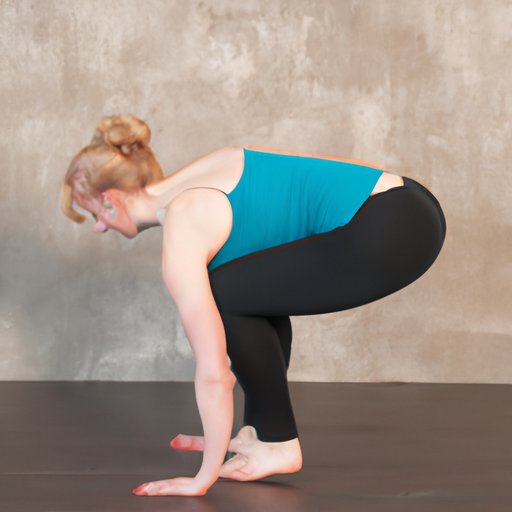
Introduction
Do you often feel tightness or discomfort in your back? Do you find it difficult to move or sit for extended periods of time? Back flexibility is essential for maintaining good health and wellbeing, yet many people neglect this crucial aspect of their fitness routine. In this article, we will explore the benefits of a flexible back and provide you with practical tips and exercises to improve your back health.
The Importance of Flexibility in Your Back: A Guide to Staying Limber and Pain-Free
Having a flexible back comes with numerous benefits. Regular stretching and flexibility training can help to reduce the risk of injury, improve your posture and balance, and enhance mobility. A lack of flexibility, on the other hand, can lead to stiffness, pain, and other issues that can affect your overall quality of life. Here are some general tips to follow to maintain or improve your back flexibility:
– Incorporate stretching into your routine, ideally after a workout or physical activity
– Avoid prolonged periods of sitting or inactivity
– Invest in a good quality mattress and pillow to support your spine while sleeping
– Use ergonomic furniture to maintain proper posture
Simple Stretches for a Healthier Back: Easy Exercises to Incorporate into Your Daily Routine
Stretching your back doesn’t have to be complicated or time-consuming. Here are some simple and effective stretches that can be done at home, in the office or at the gym:
1. Knee-to-chest stretch: lie on your back with your knees bent and feet flat on the ground. Bring one knee to your chest and hold this position for 15-30 seconds. Repeat on the other side.
2. Cat-cow stretch: start on your hands and knees, with your wrists directly under your shoulders and knees under your hips. Inhale as you lift your head and tailbone towards the ceiling, and exhale as you arch your back and bring your chin to your chest. Repeat for 10-12 breaths.
3. Seated twist: sit on the floor with your legs straight out in front of you. Cross one leg over the other, placing the foot on the ground outside of the opposite knee. Twist your torso towards the bent knee, using your arm to gently press against the thigh for a deeper stretch. Hold for 15-30 seconds and repeat on the other side.
Flex Your Back to Combat Chronic Pain: Tips and Tricks for Managing Discomfort
If you suffer from chronic back pain, you might want to consider incorporating back flexibility into your pain management routine. Flexing your back can help alleviate discomfort and stiffness, especially in cases of conditions like sciatica or herniated discs. Here are some tips and tricks for stretching a painful back safely:
– Use props like blocks or blankets to support your back during stretches
– Start slow and gentle, gradually increasing the intensity and duration of your stretches
– Listen to your body and stop if you feel any sharp or burning pain
In addition to stretching, you might also consider other ways to manage your back pain, such as massage, acupuncture, or physical therapy.
Yoga for a Flexible Spine: Poses and Sequences to Keep You Feeling Strong and Supple
Yoga is an excellent way to improve your back flexibility while also building strength, balance, and relaxation skills. Here are some yoga poses and sequences to try at home or in a class:
– Downward-facing dog: start on your hands and knees, tucking your toes under and pressing up into a plank position. Lift your hips towards the ceiling, keeping your arms and legs straight. Hold for 10-12 breaths.
– Child’s pose: start on your hands and knees, then lower your hips back towards your heels, stretching your arms out in front of you. Rest your forehead on the ground and breathe deeply for 10-15 breaths.
– Sun salutation: this is a flowing sequence of poses that can help stretch and strengthen the entire body. It involves moves like forward folds, plank pose, and upward-facing dog. You can find many tutorials and variations of this sequence online or in a yoga class.
Don’t Neglect Your Back: How to Flex Those Muscles for a Healthier You
Your back health is just as important as any other aspect of your wellbeing, yet it’s often neglected or overlooked. To ensure you’re taking care of your back properly, here are some additional tips to keep in mind:
– Avoid relying solely on passive stretching or stretching machines
– Don’t neglect the upper back and neck, which are often overlooked in back stretches
– Always warm up before stretching or exercising to prevent injury
– Remember to breathe deeply and evenly throughout your stretches
The Do’s and Don’ts of Flexibility Training: A Comprehensive Guide to Safely Flexing Your Back
To ensure you’re stretching your back safely and effectively, here’s a quick summary of do’s and don’ts to keep in mind:
Do:
– Warm up properly before stretching
– Stretch slowly and gently, avoiding bouncing or forcing a stretch
– Use proper form and alignment
– Breathe deeply and evenly throughout your stretches
– Listen to your body and adjust your stretches as needed
Don’t:
– Over-stretch or push beyond your limits
– Hold your breath
– Neglect other muscle groups
– Neglect your upper back and neck
– Use stretching as a substitute for other forms of exercise or activity
Conclusion
In summary, your back flexibility is critical for maintaining good health and preventing injuries or chronic pain. By incorporating stretches, exercises, and other wellness practices into your routine, you can improve your posture, mobility, and overall quality of life. Remember to be patient and consistent, and don’t hesitate to seek professional advice if you have any concerns or issues.




